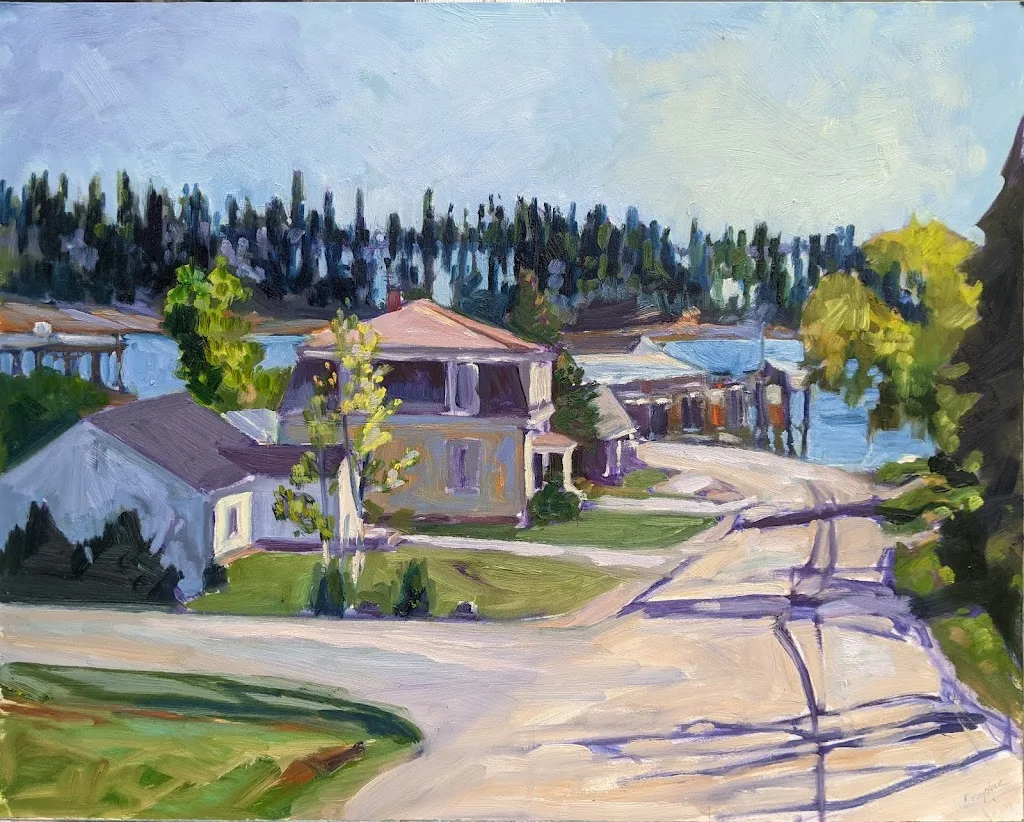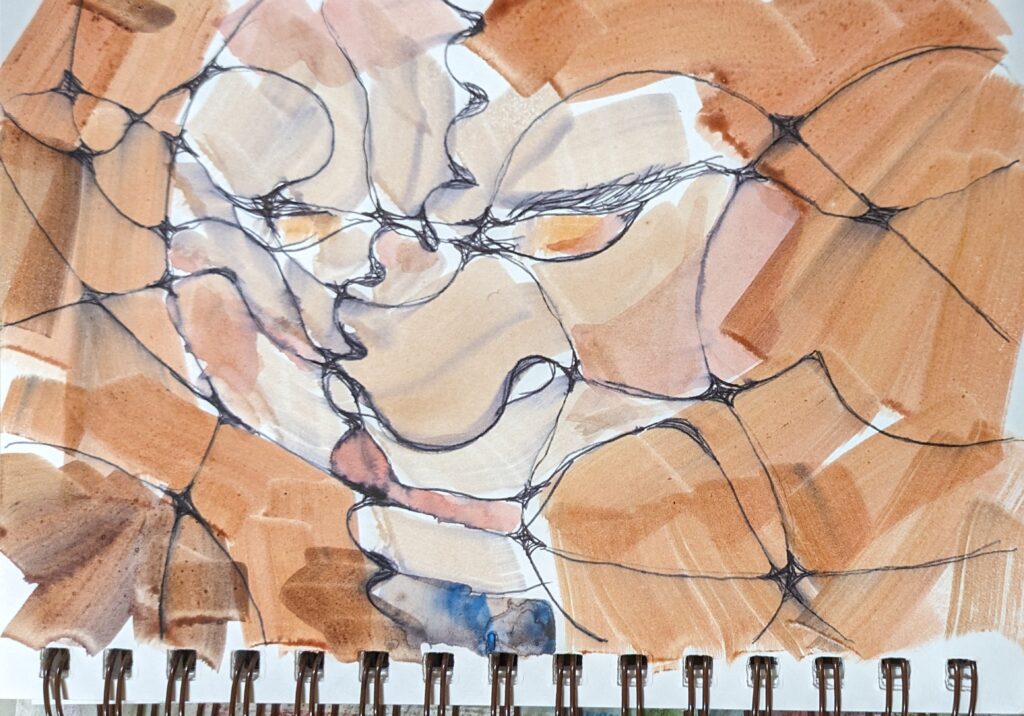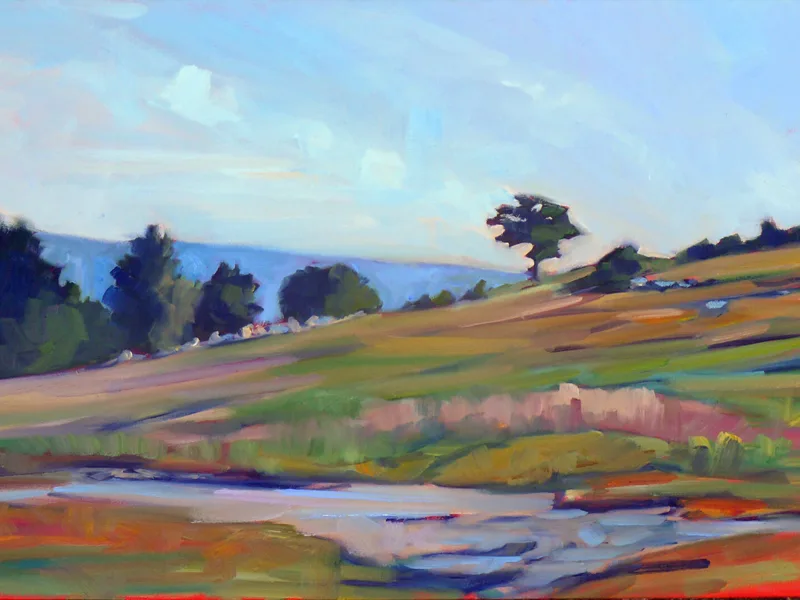
With some trepidation, I handed Monday’s Words and Pictures class over to my student Rebecca Bense. She led us in an impromptu neurographic art exercise. I know, love and trust Becky, but I’ve had enough therapy to be guarded about diving into my subconscious. By the end of the exercise, I thought it was a good way to dig deeper into the meaning of art. And, since I seemed to have drawn a hag-ridden self-portrait (below) I was startled by the result.

Monday’s class is a very small group, and I’m teaching it because the content is important to me. If I used the customary pedagogical method and chased around questioning and critiquing, nobody would have a moment’s peace. Instead, I’m developing ideas with, rather than for, the class. It’s fantastic fun for me, and I think I’ll probably learn something new about teaching.
A teacher is first a learner
I didn’t really have mastery of my craft until I learned to break it down in discrete steps and describe it to others. After all, that is what school is all about: repeating what one has learned. Not every artist is a good teacher; I know some very fine painters who are inarticulate. But when teaching is going well, it’s a two-way street. I’m constantly surprised and amazed by what I learn from my students, as Monday’s class demonstrated.

Why does anyone teach?
The obvious answer is that teaching provides a steadier income than just selling paintings, which can be a ‘canary in a coalmine’ career—great when the market is up, dismal when it’s down. But nobody survives teaching if their motivations don’t run deeper. “Because you like telling people what to do,” my smart-aleck daughter suggested. That’s probably partly true.
Good teaching is akin to preaching. They both require a belief in and passion for the subject. Building on that, you harness communication skills, technical ability, and human connection, but they’re all secondary to that passion.

True relationships
After a few decades of teaching and writing about painting, I’ve shared a lot about my life. My students have done the same. If a painter takes one of my online classes, they’re signing up for 18 hours of ensemble learning. If they take one of my workshops, it’s a full week. No, we’re not gossiping or chattering idly. We concentrate on painting, but that is a highly personal subject. We can’t help but make connections.
Although I once considered myself a private person, I’m now comfortable with this. For one thing, these days there’s very little anyone can blackmail me with.
Teaching has a long reach
I have students who have gone on to professional art careers. Some now teach, and some, like Cassie Sano, are successful writer-illustrators. Student Mark Gale works in an art program with homeless people in Austin, TX. Some, like architect Kamillah Ramos, will outlive me.
Like most artists, I went into art thinking I would make objects of lasting beauty. What if the actual product turned out to be future artists?
(I realize with a start that we’re within a month of my July workshop here in Rockport. If you’re considering it, you want to register soon, since it’s both close and nearly filled up. My other workshops are listed below.)
Reserve your spot now for a workshop in 2025:
- Advanced Plein Air Painting, Rockport, ME, July 7-11, 2025.
- Sea and Sky at Acadia National Park, August 3-8, 2025.
- Find Your Authentic Voice in Plein Air, Berkshires, MA, August 11-15, 2025.
- Immersive In-Person Fall Workshop, Rockport, ME, October 6-10, 2025.
